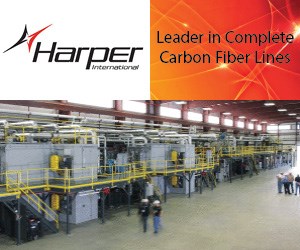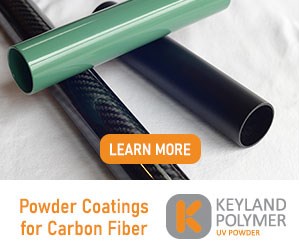Avient launches moisture-resistant nylon long fiber thermoplastic composite
Nylon 6 and 6/6-based Complēt composite effectively prolongs the effectiveness of a part’s structural capabilities in humid environments and features a smooth surface appearance.

Avient’s new line of Complēt moisture-resistant nylons with long fiber reinforcement feature enhanced surface aesthetics that are virtually free of visible fiber. Photo Credit: Avient.
Avient Corp. (previously PolyOne and Clariant Masterbatches, Avon Lake, Ohio, U.S.) announced on July 12 the availability of a new series of nylon-based Complēt long fiber-reinforced thermoplastic (LFT) composites with enhanced moisture resistance and smooth surface aesthetics. These formulations feature nylon 6 and 6/6 with delayed moisture absorption, Avient says, which prolongs the effectiveness of their structural performance in moisture-rich environments.
These new materials also reportedly take aim at inconsistent surface appearance issues with long fiber polyamides, which the company notes have affected quality perceptions in the past. Complēt’s LFT grades with moisture-resistant nylon feature surfaces that are smooth and virtually free of visible fiber, making it suitable for a wide range of consumer applications.
Complēt moisture-resistant nylon 6 and 6/6 grades are globally available in several fiber loading levels (weight percentages) using long glass fiber, long carbon fiber or hybrid combinations. This allows the materials to retain structural properties that fall between those of standard and specialty nylons when exposed to moisture, Avient says. As a result, the materials are said to be ideal for metal replacement and lightweighting in automotive and powersports applications that encounter varying climates or intermittent exposure to water.
In addition to absorbing moisture more slowly, Complēt nylon grades provide lower shrink for applications that require high dimensional stability. In effect, they serve as a material solution to combat warp distortion from uneven cooling.
Related Content
-
Recycling end-of-life composite parts: New methods, markets
From infrastructure solutions to consumer products, Polish recycler Anmet and Netherlands-based researchers are developing new methods for repurposing wind turbine blades and other composite parts.
-
PEEK vs. PEKK vs. PAEK and continuous compression molding
Suppliers of thermoplastics and carbon fiber chime in regarding PEEK vs. PEKK, and now PAEK, as well as in-situ consolidation — the supply chain for thermoplastic tape composites continues to evolve.
-
Carbon fiber in pressure vessels for hydrogen
The emerging H2 economy drives tank development for aircraft, ships and gas transport.













